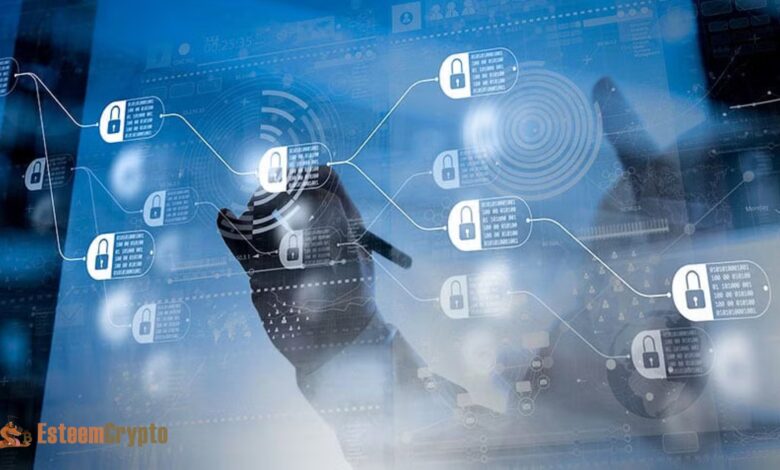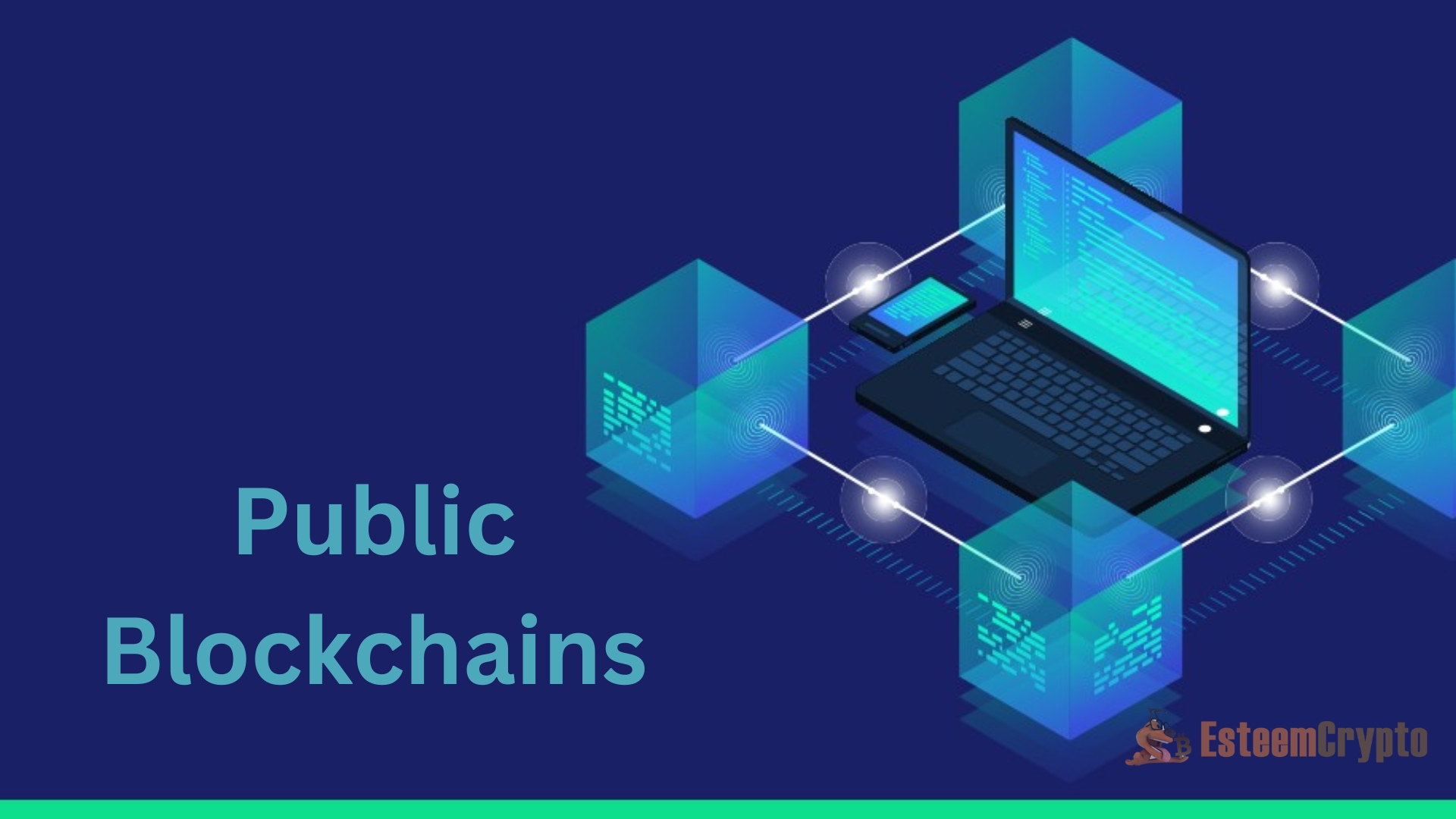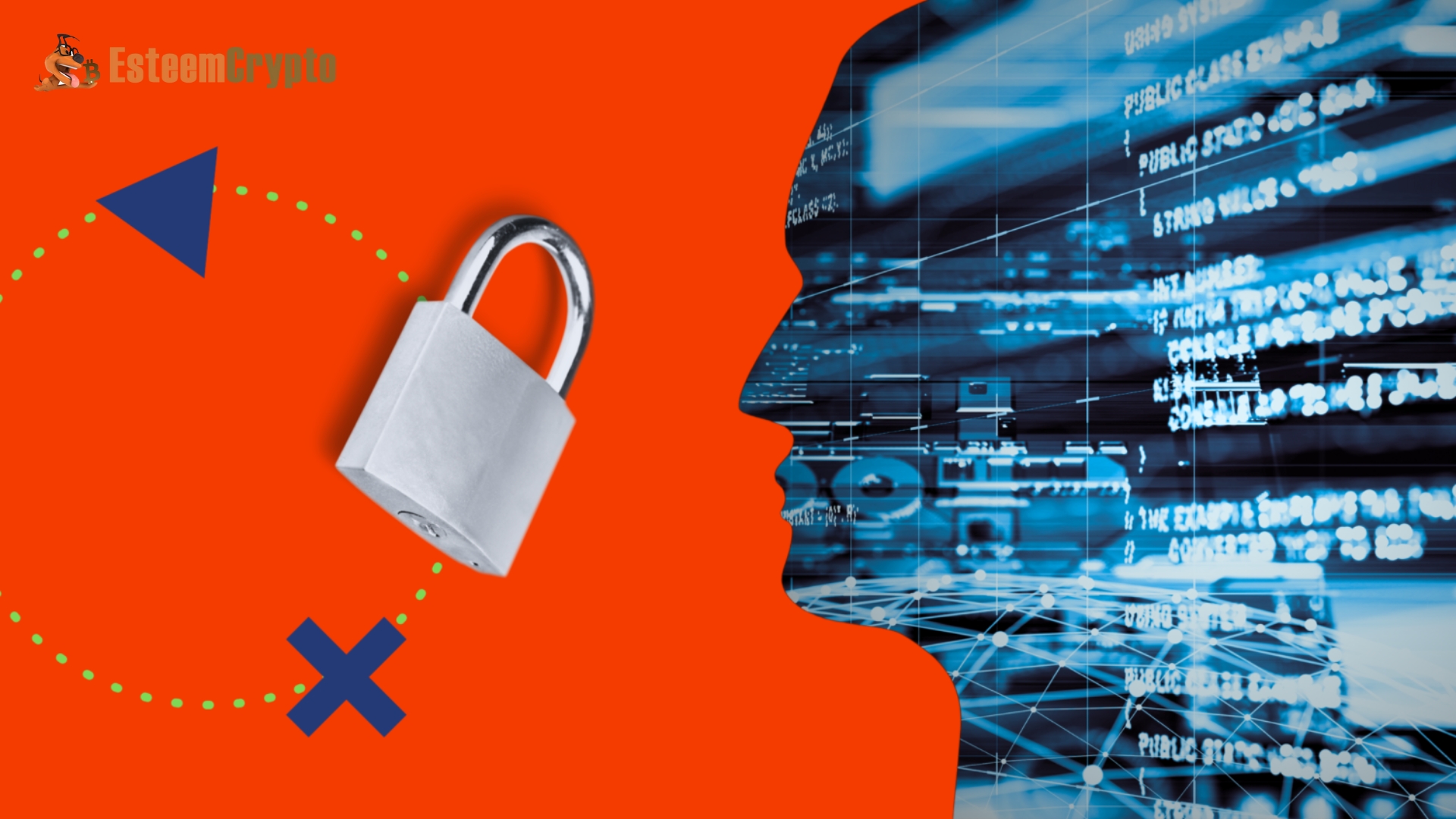Blockchain Security: An In-depth Explanation By Esteemcrypto

Blockchain Security. As more people find ways to make money using blockchain technology, its adoption rate has skyrocketed. Users, however, seem to have paid little heed to the blockchain’s vulnerabilities. At the same time, malicious actors have their sights set on those same vulnerabilities to exploit them for their benefit.
The sector has witnessed a steady increase in the frequency of cyber attacks, which has led many to worry about the safety of any new blockchain technology. Although many people are interested in blockchain’s exclusive use cases, there are still valid worries regarding the security and dependability of the blockchain infrastructure. This guide hopes to shed light on blockchain security and encourage interested users and enthusiasts to learn more about the topic and blockchain’s role in providing security.
Blockchain and Its Types
First, let’s grasp the basics of blockchain technology and its applications. Blockchain is a decentralized ledger technology (DLT) that promotes a trustworthy and reliable environment through its design and operation. A distributed ledger system that is specifically duplicated and dispersed throughout an entire network of computers is known as blockchain. This new development uses a data format that already has built-in security features.
The blockchain infrastructure is frequently utilized so that all specified computer network nodes or members can record, share, and view encrypted transactional data on their blockchain. There are two main categories of blockchains: public blockchains, often called permissionless blockchains, and private blockchains, sometimes called permissioned blockchains.
Public blockchains
As their name suggests, public blockchains are open to the public and prioritize user engagement and data openness. Because anyone with an internet connection can join a public blockchain, it is also considered permissionless. Due to the anonymous nature of public blockchain operations, users can keep their information private.
A public key is assigned to each user of the permissionless blockchain, allowing them to perform actions on the blockchain. Similarly, users’ names are typically linked to this public key; this helps Blockchain achieve its goal of transparency.
Through crypto-economics, public blockchains provide decentralization, which aids the system in ensuring cooperation throughout its distributed ledger network. The system requires an entire community of nodes to function because users must authenticate or confirm any information supplied to a block to maintain openness, adequacy, and uniformity.
Private blockchains
Private blockchains, unlike public ones, necessitate authorization before anyone can join. For this reason, users may rest easy when verifying and recording information in a block, as it is a permissioned blockchain that limits access.
In particular, any authorized user of a private blockchain can access and verify any personally identifiable information. This design makes the private blockchain a popular choice among corporations and organizations.
Due to stricter access controls and the fact that a small group of people often runs them, private blockchains are considered more secure than public ones. While the blockchain does provide some protection against external cyberattacks, it is not impenetrable to malicious actions carried out by insiders.
Blockchain Security Overview
Blockchain security includes a full suite of assurance services, cybersecurity frameworks, and appropriate solutions to reduce the likelihood of fraud and cyber-attacks. Cybersecurity frameworks, security testing procedures, and secure coding standards are in place to keep blockchain networks safe. These methods have proven viable for safeguarding a blockchain solution from cyberattacks, breaches, and online fraud.
The blockchain system is no different from any other financial or data platform because it has security flaws. Even while blockchain security isn’t easy to crack, it’s crucial to remember that blockchain isn’t flawless and can be hacked somehow.
Blockchain solutions are vulnerable to malicious actors with access to large amounts of computational power, which can compromise proof-of-work blockchains or existing coins in proof-of-stake (PoS) systems. Thanks to the blockchain security system, however, users may be able to take precautions that will give them an advantage in the face of cyber threats targeting solutions.
Blockchain Security Threats
Several cyber risks can affect blockchain technology, including phishing, code exploitation, routing and Sybil attacks, stolen keys, and others. As an example of one of the earliest hacking efforts in blockchain technology, phishing assaults are just one of many cyber dangers. In this attack, the bad guy poses as a reliable source to trick you into giving over personal information. Traditional financial system customers are not the only ones who have fallen for phishing scams; the blockchain business is no exception. Communication channels such as text, email, and phone conversations are frequently used.
In contrast, code exploitation occurs when a hacker who also happens to be a blockchain user finds a security defect in the software and uses it maliciously to his advantage.
Routing attacks are another malevolent tactic that hackers use to compromise blockchain technologies. There are several variations of this type of assault, the most prevalent of which are man-in-the-middle and denial-of-service attacks. While a permission blockchain user is online, fraudsters can exploit routing attacks to compromise the blockchain’s security. Here, the authorized user is blissfully unaware that the data they contribute to or confirm in a blockchain is being watched and might be compromised. Ultimately, this leads to a serious cyberattack, and users usually lose money.
Finally, key theft is another typical attack vector for blockchain security. Users have a private key representing their unique identity to access the blockchain network and execute operations. Just think of the chaos if a bad guy gets their hands on these keys. In reality, a hacker may try to change data in a blockchain using a key that only authorized users can access if it falls into the wrong hands. Consequently, users’ money is in danger of being defrauded.
Best Practices for Building Secure Blockchain Solutions
Blockchain technologies are highly cyber-risky. These best practices for developing secure blockchain systems can help reduce fraud in the blockchain industry.
Those looking to construct a trustworthy blockchain system should
- The first step is to establish and uphold endorsement agreements through legal contracts.
- For the blockchain to manage data access, it is necessary to activate identity and access management (IAM) restrictions.
- Tokens appropriate for user authentication, verification, and authorization should be executed.
- Make sure that identity keys are securely stored so that they cannot be easily stolen.
- After appropriate business logic has been applied, secure blockchain ledger entries using a privileged access management (PAM) solution.
- Secure sensitive information with privacy-preserving infrastructures.
- Prioritize the implementation of multi-factor authentication.
- Maintain strong cryptographic key management.
- Conduct a consistent vulnerability assessment and penetration testing (VAPT) on the blockchain.
Conclusion
Blockchain users who want to create a safe blockchain system should carefully consider the best practices outlined in this article. Before implementing blockchain technology, they must ensure the infrastructure is secure and durable.
It has been found that blockchain flaws are mostly caused by people and companies making bad choices about the underlying technology. Vulnerabilities provide data security issues, which put users’ data and information at risk and, ultimately, cause financial loss. The blockchain world will transform into a more secure user ecosystem when these practices are widely used.




